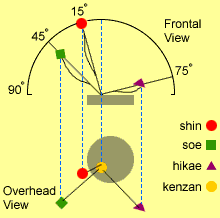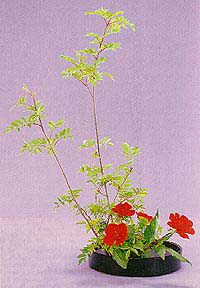What is Ikebana?
Ikebana is a highly developed art form that has evolved since the 6th Century and the introduction of Buddhism to Japan from China and Korea. In Japan, Buddhist flower offerings were created by Buddhist priests for placement on temple altars. The arrangements consisted of three main stems, rising out of water appearing as one and representing the harmonious relationship of heaven, man, and earth (shin, soe, and hikae/tai, respectively). From the earliest school of Ikebana, the Ikenobo school, thousands of schools have developed over the centuries, transitioning from strictly religious to secular environments.
What are the fundamental design principles of Ikebana arrangements?


Relationships of harmony are foundational to all Ikebana arrangements, including the selection of branches, flowers, containers, and the placement of the finished arrangement within a physical space. Any part of a plant, flower, or tree may be used. Although each Ikebana school emphasizes a unique aspect of the art, all schools share the principles of simplicity of line, spatial relationships, and asymmetry in the arrangement. Students of Ikebana learn these basic principles from the earliest classes. Concepts of geometry, size, color, line and mass are developed and expressed in each arrangement. Different from western flower arranging, Ikebana incorporates minimalism with a focus on creating space within the arrangement. The effect of studying Ikebana is a heightened appreciation for nature and the human connection to the natural world.
Where can I take Ikebana lessons?
Please see this page.
Can I hire someone to make an Ikebana arrangement for my event?
Our chapter partners with several community organizations to put on events and exhibits of public interest and appreciation. While a few of our members may hire their services out privately, it’s not a function of our chapter, nor do we maintain a list of who may be doing this.